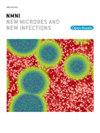旅行者的登革热负担:系统文献综述
IF 5.4
Q2 INFECTIOUS DISEASES
引用次数: 0
摘要
登革热是一种蚊子传播的病毒感染,其全球影响日益扩大,包括往返流行地区的国际旅行者。本系统文献综述旨在评估来自非登革热流行国家的旅行者的临床和经济负担。方法本系统综述遵循PRISMA指南,评估非流行区和流行区之间旅行者登革热的发病率、流行率、死亡率、医疗资源使用和成本。我们系统地检索了MEDLINE、Embase、谷歌Scholar、PubMed和Epistemonikos。由于异质性,数据是描述性合成的,没有进行定量分析。结果纳入70项独立研究。设计的异质性、不一致的报告和缺乏分母数据限制了计算发病率或比较不同地区风险的能力。两项前瞻性研究提供了发病率,达到每1000人月旅行58.7例。没有研究报告患病率数据。只有3例病例,报告的死亡率很少见。没有确定成本数据,但从7份出版物中确定了有限的医疗资源使用数据。结论:研究结果强调了量化个体风险的挑战,以及改进监测、前瞻性数据收集和有针对性的预防策略的必要性。这些结果支持改进旅行健康指导,并可能为前往流行地区的旅行者提供疫苗接种策略。本文章由计算机程序翻译,如有差异,请以英文原文为准。
The burden of dengue fever in travellers: a systematic literature review
Background
Dengue is a mosquito-borne viral infection with growing global impact, including international travellers travelling to and from endemic regions. This systematic literature review aimed to assess the clinical and economic burden of dengue in travellers from non-endemic countries.
Methods
This systematic review was conducted following the PRISMA guidelines to assess the incidence, prevalence, mortality, healthcare resource use, and costs of dengue fever in travellers between non-endemic and endemic regions. We systematically searched MEDLINE, Embase, Google Scholar, PubMed, and Epistemonikos. Due to heterogeneity, data were synthesised descriptively without quantitative analysis.
Results
Seventy unique studies were included. Heterogeneity in design, inconsistent reporting, and lack of denominator data limited the ability to calculate incidence rates or compare risks across regions. Two prospective studies provided incidence rates, reaching 58.7 cases per 1000 person-months of travel. No studies reported prevalence data. With three cases, reported mortality was rare. No cost data were identified, but limited data on healthcare resource use were identified from seven publications.
Conclusions
Findings highlight the challenges in quantifying individual risk and the need for improved surveillance, prospective data collection, and targeted prevention strategies. These results support improved travel health guidance and may inform vaccination strategies for travellers to endemic regions.
求助全文
通过发布文献求助,成功后即可免费获取论文全文。
去求助
来源期刊

New Microbes and New Infections
Medicine-Infectious Diseases
CiteScore
10.00
自引率
2.50%
发文量
91
审稿时长
114 days
 求助内容:
求助内容: 应助结果提醒方式:
应助结果提醒方式:


